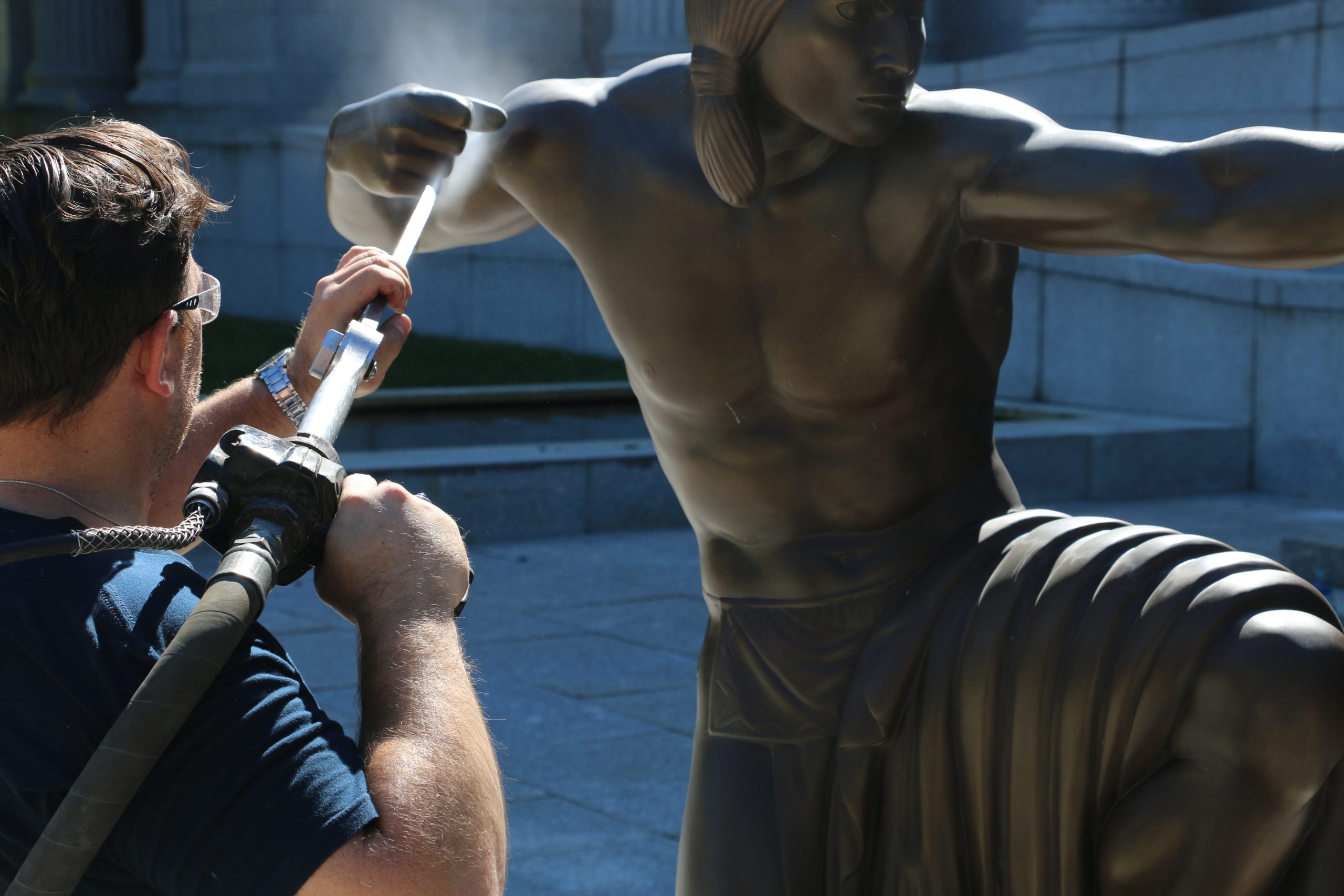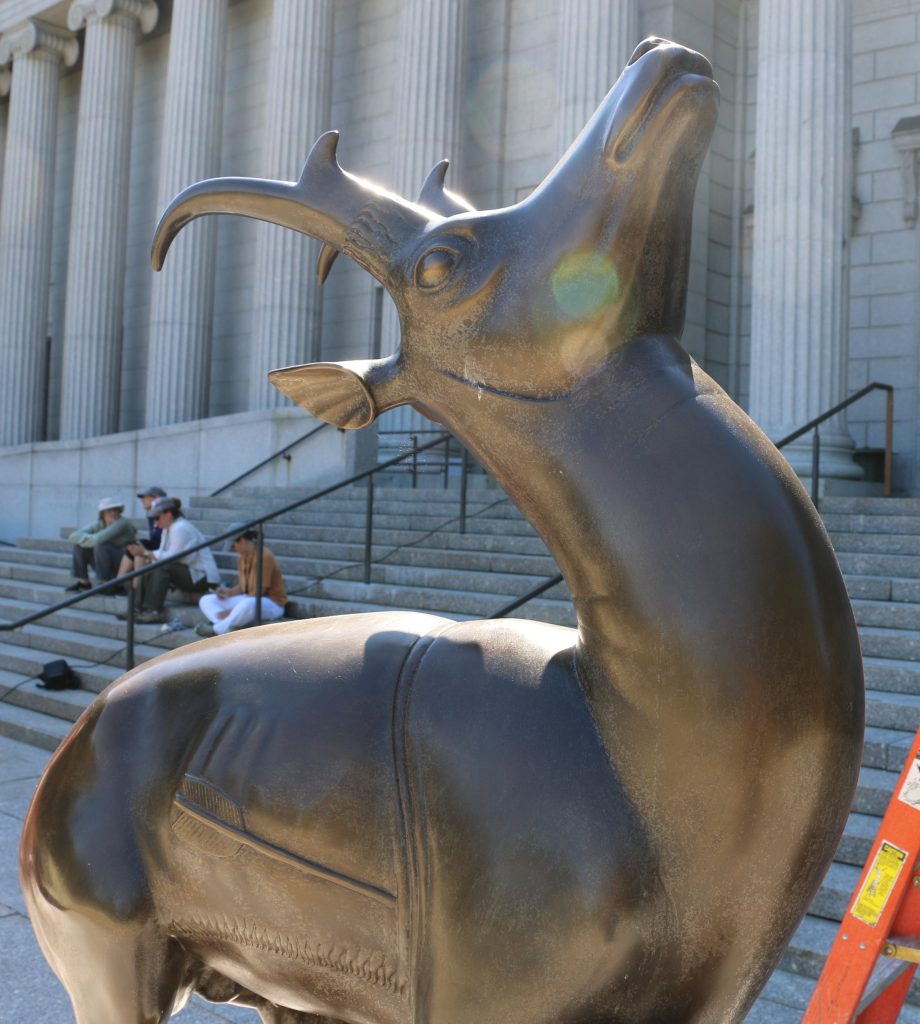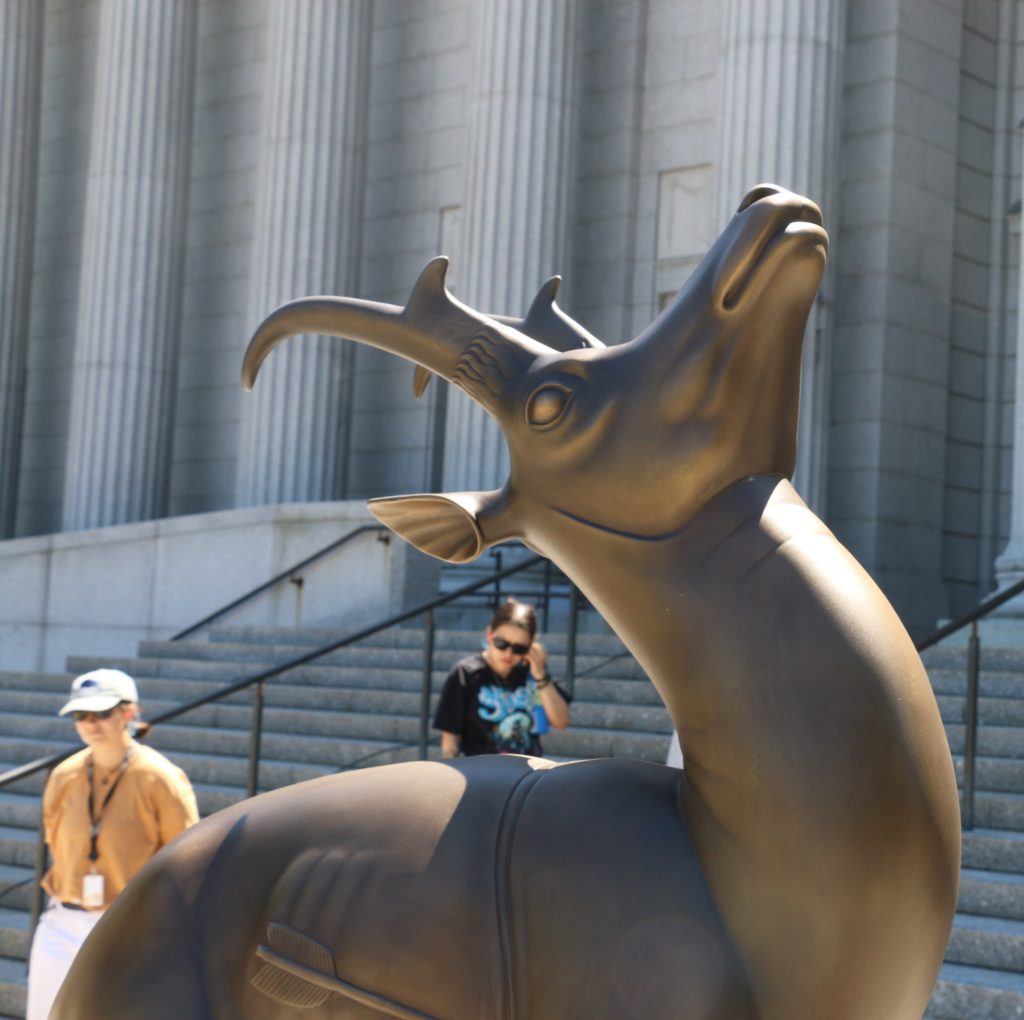On Tuesday, July 22nd, 2025, Nitrofreeze Cryogenic Solutions worked directly with the Museum of Fine Arts (MFA) in Boston, Massachusetts in their conservation efforts by providing dry ice blasting services. We contributed to the historical preservation of two iconic statues modeled by Paul H. Manship located at the MFA. These two statues, known as Indian Hunter and Pronghorn Antelope, had a failing coating of Incralac and a sacrificial cold wax coating that is applied yearly. The Nitrofreeze team was contracted to utilize CO2 cleaning, or in other words Dry ice blasting, to remove the sequential layers of Incralac and wax coatings from the statues, so that new coatings could be applied.
What is Dry Ice Blasting?
Dry ice blasting is a cleaning technique that uses solid carbon dioxide pellets and compressed air. The dry ice pellets are propelled at high speed by compressed air via a blasting nozzle to remove contaminants. When compared to similar methods such as sand blasting, soda blasting, or chemical treatments, Dry ice blasting is a more efficient and environmentally-friendly process. Dry ice blasting is non-abrasive and it produces zero secondary waste (only the contaminants removed need to be cleaned up).
When the dry ice pellets hit the surface being cleaned, they immediately sublimate into CO2 gas. The substrate is then revealed as a small portion of the ice pellets’ kinetic energy is transferred to the surface being blasted, removing the adhered and contaminated layers. In addition, the remainder of the ice pellets’ kinetic energy is rapidly transformed thermally which heats up the pellet and sublimates it – this phase change from a solid to a gas effectively lifts the contaminants from the surface being cleaned.
Dry Ice Blasting Statues
Dry ice blasting for statues, sculptures and other historical restoration projects can be very useful due to the aforementioned benefits. At the MFA, we were able to remove the accumulated layers of failing Incralac and wax using this cleaning process, leaving the statue undamaged. We set up our blasting system to use a minimal amount of dry ice at a low pressure using our 2-inch fragmenting nozzle. This ensured we did not induce damage when cleaning the sculptures. In addition to this, we were able to complete the project in less than a day, reducing the overall time to restore the sculptures.
After dry ice blasting the statues and preparing the surface, a new coating system was applied. A layer of hot was wax applied, allowed to set, and buffered. Two layers of sacrificial cold wax were subsequently added. The sculptures will continue to be maintained annually with new layers of cold wax applied every summer.
Dry Ice Cleaning Sculptures
The sculptures, Indian Hunter and Pronghorn Antelope, were successfully re-coated. Dry ice blasting removed the failing Incralac and wax coatings. The process left the underlying metal undamaged, as the dry ice pellets sublimated upon contact and removed the underlying wax coat. This technique reduces the need for toxic solvents to remove failing coatings. Dry ice blasting has applications in many different areas of restoration and beyond. We have successfully restored marble steps in front of the Boston Statehouse, antique automobiles, as well as different types of wood, brick, and stone in historical buildings. Dry ice blasting is also used in other applications such as food and beverage, facilities and infrastructure, and manufacturing and heavy industry.
What Can You Do?
Nitrofreeze is determined to exceed customer expectations and requirements while maintaining rigorous environmental standards. We have been providing dry ice blasting services in the New England area for almost 20 years. If you are interested in having us review your next cleaning project, you can contact us using this link or you can reach us at info@nitrofreeze.com or at (508) 459-7447 to learn more.




